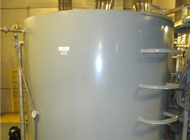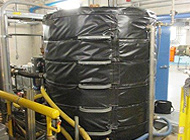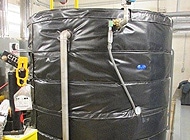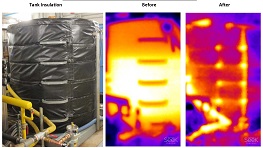Clean Water & Removable Insulation Blankets – Part III

In our last issue of Insulation Insights, we featured Part II of how our removable insulation blankets are at work at a municipal water treatment agency, helping keep workers safe from the hot exhaust piping for the agency’s back-up power systems.
In part 3 of this series, we would like to focus on energy efficiency. The agency had large (68″Ø and 72″ high) hot water tank that was not insulated and thus not operating as efficient as possible. Although the tank contents were not extremely hot (around 80° C), there were also concerns regarding personnel protection and ambient heat in the tank area.
Firwin was asked to come in and design an appropriate cover for the tank that would address the above mentioned issues.

Given the custom nature of this tank, and the number of protrusions and access points that would have to be taken into account when designing the blankets, one of Firwin’s designers went to site to measure up the tank. The client also wanted to be provided with some data as the what difference in outside temperature they could expect once the insulation blankets were installed.
Given the relatively low temperatures, Firwin’s design engineers opted to go with a blanket made up of a silicone inner liner and a PVC outer surface, sandwiched around 1″ thick Firwin 1200 insulation. The estimated outer blanket touch temperature was 35°C, with a heat loss of 1255W.

Firwin was asked to install the blankets, and while there, our installers took some thermal imaging measurements to provide the agency with a visual as to the amount of heat loss reduction the blankets would be providing.
As can be seen from the before and after images, the blankets did their job well, lowering the ambient heat, keeping the hot water tank contents hot, and thus increasing overall energy efficiency.

Other Articles: Ship Lagging Overhaul



